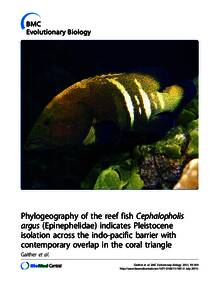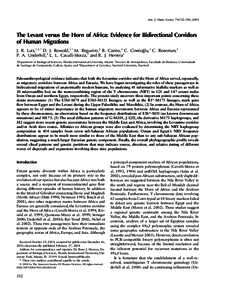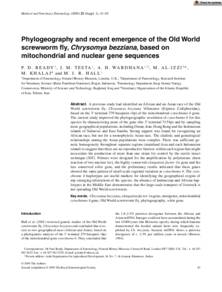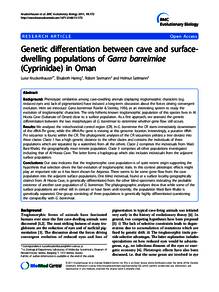Document
Phylogeography of the reef fish cephalopholis argus (epinephelidae) indicates pleistocene isolation across the indo-pacific barrier with contemporary overlap in the coral triangle.
Identifier
DOI: 10.1186/1471-2148-11-189
Contributors
Bowen, Brian W., Author
Bordenave, Tiana-Rae., Author
Rocha, Luiz A., Author
Newman, Stephen J., Author
Gomez, Juan A., Author
van Herwerden, Lynne., Author
Craig, Matthew T., Author
Publisher
BioMed Central.
Gregorian
2011-07
Language
English
Subject
English abstract
Background: The Coral Triangle (CT), bounded by the Philippines, the Malay Peninsula, and New Guinea, is the epicenter of marine biodiversity. Hypotheses that explain the source of this rich biodiversity include 1) the center of origin, 2) the center of accumulation, and 3) the region of overlap. Here we contribute to the debate with a phylogeographic survey of a widely distributed reef fish, the Peacock Grouper (Cephalopholis argus; Epinephelidae) at 21 locations (N = 550) using DNA sequence data from mtDNA cytochrome b and two nuclear introns (gonadotropin-releasing hormone and S7 ribosomal protein). Results: Population structure was significant (ST= 0.297, P < 0.001; FST= 0.078, P < 0.001; FST= 0.099, P < 0.001 for the three loci, respectively) among five regions: French Polynesia, the central-west Pacific (Line Islands to northeastern Australia), Indo-Pacific boundary (Bali and Rowley Shoals), eastern Indian Ocean (Cocos/Keeling and Christmas Island), and western Indian Ocean (Diego Garcia, Oman, and Seychelles). A strong signal of isolation by distance was detected in both mtDNA (r = 0.749, P = 0.001) and the combined nuclear loci (r = 0.715, P < 0.001). We detected evidence of population expansion with migration toward the CT. Two clusters of haplotypes were detected in the mtDNA data (d = 0.008), corresponding to the Pacific and Indian Oceans, with a low level of introgression observed outside a mixing zone at the Pacific-Indian boundary. Conclusions: We conclude that the Indo-Pacific Barrier, operating during low sea level associated with glaciation, defines the primary phylogeographic pattern in this species. These data support a scenario of isolation on the scale of 105 year glacial cycles, followed by population expansion toward the CT, and overlap of divergent lineages at the Pacific-Indian boundary. This pattern of isolation, divergence, and subsequent overlap likely contributes to species richness at the adjacent CT and is consistent with the region of overlap hypothesis.
Member of
ISSN
1471-2148
Resource URL
Category
Journal articles





